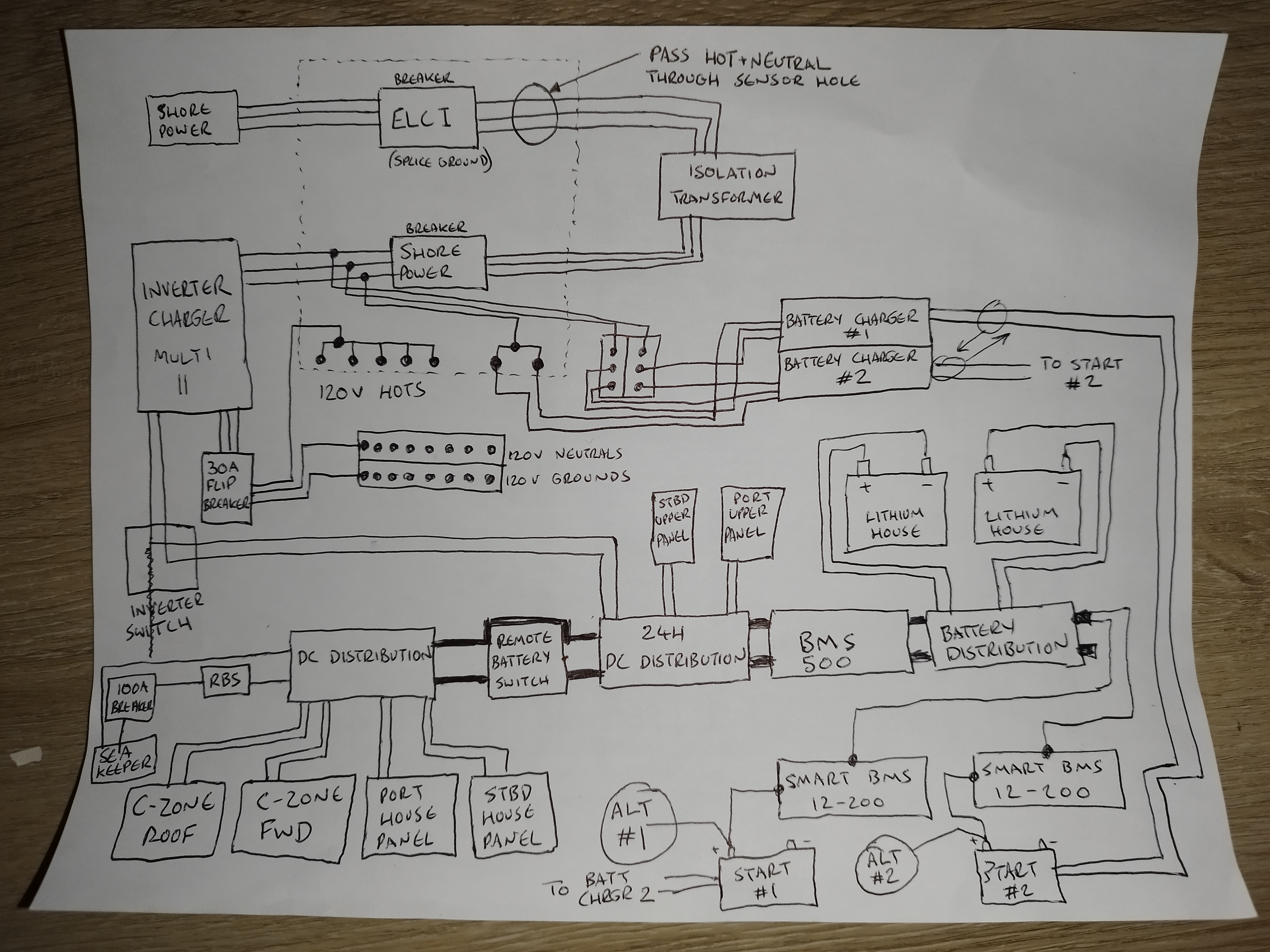Hello Victron Community,
This is my first post and I'm sure there will be more to come. I've just started a new role in a local boat builders and have been tasked with installing the power distribution system.
While planning it out I had found a few design problems and resolved a couple but have been racking my brain how to over come all of them.
The boat will have two engines with two alternators and separate AGM start batteries. (One for each engine). The client wants to be able to charge these when hooked up to shore power so we have two 12/17 victron chargers to be installed to each AGM battery.
The start batteries will then go to two Smart BMS 12-200s (one for each battery) and then go the victron smart lithium bank (2 x 12V 330ah).
Another leg of shore power will go into the multiplus II 3000 and run all the AC loads and the DC side obviously back to the lithium bank.
I know the Smart BMS does not let current back from the lithium to the starter but when the 12/17 chargers for the start batteries hit 13V, it's going to act like the alternator has kicked in and link the two battery banks being charged by the multiplus and the two 12/17 chargers.
Is this a concern and what problems would I expect to see? I hope I've made some sense and not said anything too stupid.
My first though was to use a 120v NC relay on the remote on/off of the smart BMS to open when 120V was detected on the chargers if it was to cause an issue.


